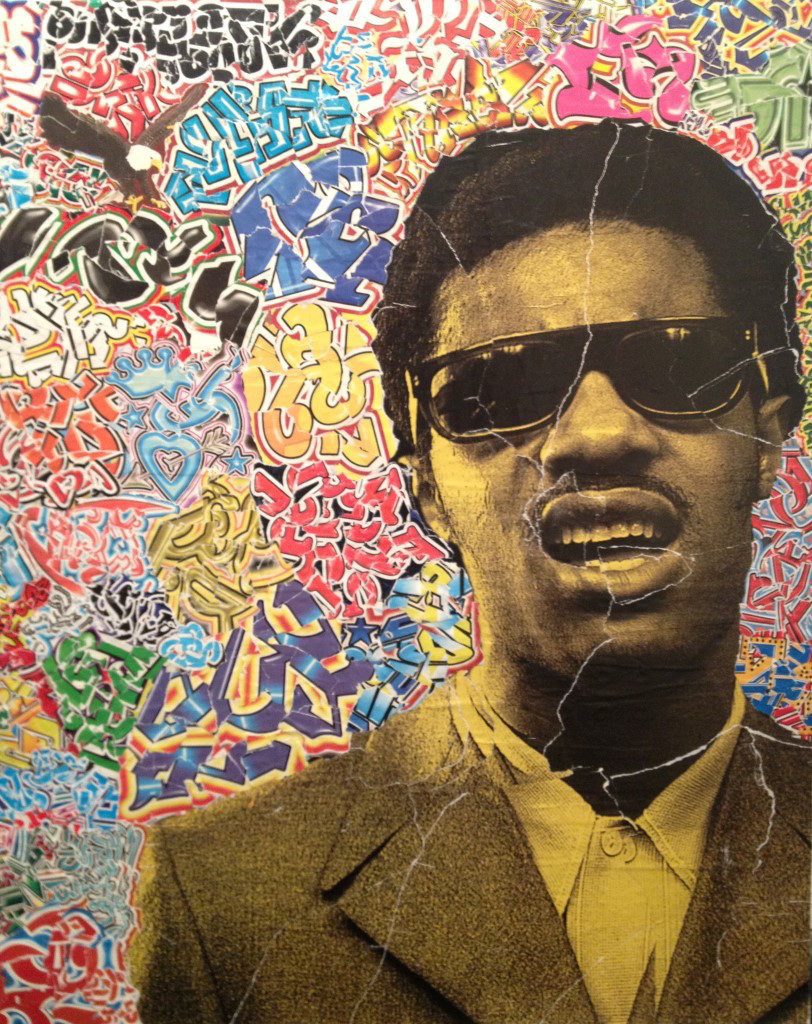The Great Musical Wondorous Life of Stevie
By: Niara Powell

An inspiration to all across America, with over 20 major awards, influence in all genres of music from R&B to Jazz, the ability to play a multitude of instruments (some simultaneously) and an induction into the Rock and Roll Hall of Fame to top it all off, Stevland Hardaway Morris has been the artist to do it all. It’s no wonder why he is better known as… Stevie Wonder.
Table of Contents
Childhood
May 13th, 1950, in Saginaw, Michigan, Lula Mae Hardaway and Calvin Judkins gave birth to who would soon be one of the biggest sensations of America, Stevland Hardaway Judkins. Stevland was born a premature baby which resulted in developing retinopathy of prematurity. This condition made it so that the growth of his eyes was stunted, his retinas detached and thus made him blind. However, this didn’t hold young Stevland back. Starting at the age of four he had already known how to play piano, harmonica, and drums. Singing was also something that came natural to him having formed a singing duo with one of his childhood friends named, Stevie and John as well as singing in his school and church choirs. This marked the beginning of Stevland’s life-long career.
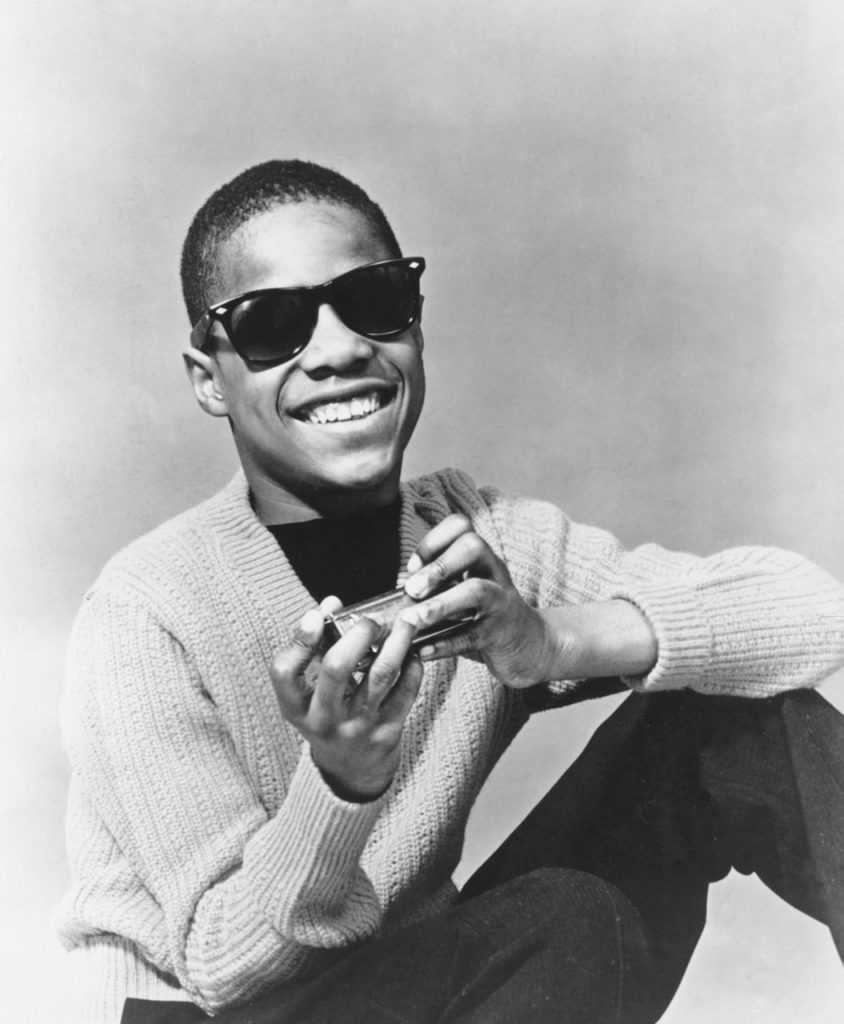
Influences
Before getting into the career of Stevie Wonder, it is important to acknowledge those who inspired him and led him to inspire others. Stevie Wonder’s biggest idols, some which became his main collaborators, included Ray Charles, who was also a blind Black musician and truly paid the way for Stevie Wonder. Also, Sam Cooke, Johnny Ace and Smokey Robinson and the Miracles. When Stevie got a little older, one of his influences for his decision to electrify R&B was the band Tonto’s Expanding Head. If it weren’t for these great musicians we may not have the incredible Stevie Wonder.
Career
Young Stevie
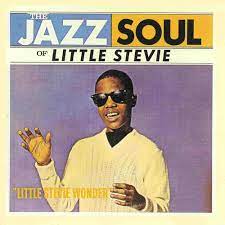

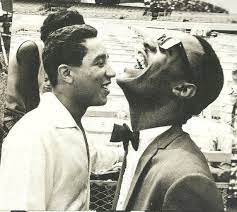
In 1961 at the age of 11, young Stevie sang the song “Lonely Boy” to the singer Ronnie White from the popular group The Miracles and White then took him to audition for Motown Records. Motown was one of the biggest Black labels at the time and Stevie was signed by Berry Gordy to Motown’s Tamla label. This is when Stevland became “Little Stevie Wonder”.
With the producer and songwriter Clarence Paul, Stevie Wonder recorded the album Tribute to Uncle Ray which consisted of covers of songs from the famous blind artist Ray Charles. The next album that was released shortly after, was The Jazz Soul of Little Stevie. This album was filled with majority instrumental songs with many of them composed by Clarence Paul and co-written by Little Stevie. Although these albums didnt perform as well as planned Stevie Wonder had successful single “I Call it Pretty Music, But the Old People Call it the Blues”. This was his debut single released in the summer of 1962 and did pretty well almost breaking Billboard 100 upon release.
By May of 1963, Wonder performed in one of his most well-known performances to date: Recorded Live: The 12 Year Old Genius. In addition to this Stevie’s number one hit “Fingertips” was released, went straight to number 1 on Billboard top 100 and simultaneously number one on the R&B charts as well- the first song to ever do that. This had made Little Stevie Wonder the youngest artist to ever top the chart during this time.
Unfortunately Stevie Wonder’s songs after this were not as successful due to him reaching puberty and his voice starting to change. If it weren’t for songwriter and record producer Sylvia Moy to help persuade Berry Gordy to let Stevie stay, that would’ve been his last time performing. However, it’s a good thing he stayed because Stevie went on to record more hits such as “With a Child’s Heart”, a cover of Bob Dylan’s “Blowin’ in the Wind” and songs he wrote/co-wrote and produced himself such as “For Once in My Life”, “Signed, Sealed, Delivered I’m Yours” (being his first self-produced song), and “My Cherie Amour”. Stevie also became a big writer for other Motown artists during this time finding success with artists such as Smokey Robinson and the Miracles writing their number one hit “The Tears of a Clown”. At this point in And all of this was reached before Stevie was 20 years old! Also let’s not forget his performance in the 1969 Harlem Cultural Festival which set the stage for what the 70’s would bring.
The Sizzlin’ 70’s
Now we reach the 1970’s and if you thought the 60’s was great for young Stevie, the 70’s had just as much in store. In his personal life Stevie Wonder had married songwriter and former Motown secretary Syreeta Wright and together they worked on his album Where I’m Coming From that came out in 1971. This proved to be a monumental album in the age of R&B because Wonder had utilized synthesizers and that started to change the face of R&B. Also this albums lyrics went along with the theme of Black artists in the 70’s being Black Empowerment. Wonder stated “I wanted this album to touch on the social problems of the World and mean something to people…”(McCarthy 2013). However, this album was also heavily criticized becuase in comparison to Marvin Gaye’s album What’s Going On that was released the same year, Stevie’s was seen by some as having a lack of unity and flow.
In May of 1971, Wonder had let his Motown contract expire, went on to record two new albums and then signed a new contract with Motown that would allow him a higher royalty rate. With this new contract as well as utilizing the received criticism from his album Where I’m Coming From Wonder had released Music of My Mind which was his first album that was a wholistic piece of art with each song flowing together with a common theme.
By 1972, Wonder had released yet another album, this one featuring the number one hits “Sunshine of My Life” and “Superstition”. “Superstition” is a song that is still viewed as an artistic masterpiece today due to the unique layering and the use of the Hohner Clavinet keyboard which is what creates the distinct almost “electrified banjo” type of sound all throughout the song.
In 1973 the album Innervisions was released which was one of his most successful albums featuring songs like “Living for the City ” and “Higher Ground” which both charted number one on R&B charts and landed the album three Grammys, one of which being album of the year as well as a spot on the Rolling Stone’s 500 Greatest Albums of All Time.
Although this seemed like a great accomplishment, Wonder’s 70’s hits certainly did not stop there. In 1975 Stevie co-wrote and produced the well-known song “Lovin’ You” sang and performed by none other than Minnie Riperton in addition to a lesser known song they did together called “Take a Little Trip”(Allmusic). In September of 1976 Wonder came out with the album Songs in the Key of Life. This album quickly became one of many of Wonder’s greatest and most well-known albums with songs like “I Wish”, “Sir Duke”, and the song he wrote for his newborn Aisha “Isn’t She lovely”. This album debuted at number one on Billboard Top 100’s for 14 weeks consecutively which was the first American album to ever reach that. Many say that the reason this album did so well was because of the different tones that each song took on , some being more celebratory, some being very contemplative. Nonetheless, it reached number 4 in the Billboard Top 500 Albums of All Time Taking the Place of the Beatles’ Abbey Road.
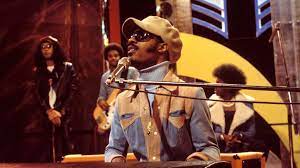

Reaching Up and Reaching Out
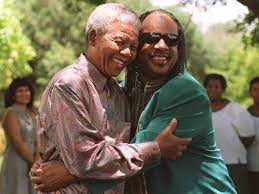
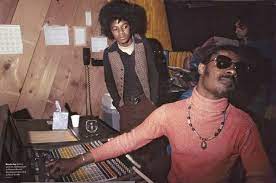


The 80’s was what many described as Stevie Wonder’s peak across all platforms. Not only was there an increase in his chart sales but there was an increase in his participation in charities, he had collaborations with more high-profiled artists, he was making an even bigger political impact and he was seen more in TV appearances -on shows such as “The Cosby Show” and “Saturday Night Live”- and writing soundtracks.
As mentioned before, Stevie wonder started working with more high profiled artists during this time. That included, Dionne Warwick, Barbara Streisand, the Beach Boys and Micheal Jackson, Melle Mel, Chaka Khan,and the Eurythmics among others. He wrote and produced the song “Let’s Get Serious” for Jermaine Jackson that received high accolades. In addition to that, in 1982 Stevie collaborated with the incredible Jazz artist Dizzy Gillespie and came out with “Do I Do”. He had also made a number one hit with Paul McCartney of The Beatles called “Ebony and Ivory” which spoke of racial harmony and bringing people together.
This leading into some of Stevie’s political activism at the time. In 1980 Wonder came out with Hotter Than July and one of the featured songs was “Happy Birthday” that was made in support of making Martin Luther King’s Birthday the national holiday it is now. Similarly, in 1982 Wonder released the song “Front Line” which told the story of a soldier in the Vietnam War. Stevie Wonder’s activism did not end there, he also accepted an award on behalf of Nelson Mandela and was honored by the United Nations Special Committee Against Apartheid that acknowledged his stance against racism in South Africa.
Slowing Down
In the 1990’s Stevie Wonder had decided from then forward he still wanted to release new music, but at a much slower pace. In ’91 one of his few albums released during this period was the soundtrack for Spike Lee’s film Jungle Fever. The movie placed very well in box offices and the soundtrack placed in the top 50 US R&B/Hip Hop of the Year. This was not the last time Stevie worked with Spike Lee because in 2000 he also did songs on the soundtrack for his movie, Bamboozled. Leading from these soundtracks, Stevie Wonder became a big feature with hip hop artists like Snoop Dogg, Busta Rhymes, and Dr. Dre. He also went on to make many key performances as large events such as the Super Bowl XL, the 2006 celebration “A Capitol Fourth”, the unfortunate funeral of his long time friend Micheal Jackson, and the Inaugural Celebration in 2009 of the first Black president Barack Obama.
Although Stevie Wonder’s last album A Time to Love was released in 2005, he has still been collaborating with newer artists such as HER, Tori Kelly, and Ariana Grande to name a few, he is also actively performing and even going on tours. Only time will tell if he will be releasing a new album soon but the albums he has already made are timeless parts of Black history that will be enjoyed for decades to come.
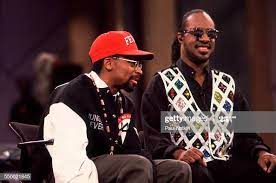

Legacy & Philanthropy


Stevie Wonder is arguably one of the most influential legendary artists of our time. Being disabled and Black living in America is already commendable in itself, but the way in which he was able to use his talents and reach his full potential while showing the world that any one can do anything they put their minds to, is really where the inspiration lies. By the age of 13 he was already a trailblazer being the youngest artist to ever have a number 1 hit on the Billboard 100. During his peak years, he had written and produced for 100’s of artists other than himself and had number 1 hits year after year.In addition to this, he made great strides in the world of R&B during the 70’s being one of the first to use synthesizers and electronic instruments in his songs which brought about many of the complex sounds on tracks that came about throughout the 70’s. In addition to the synthesizers, Wonder had also played piano, harmonica, congas, drums, bongos, the organ, the melodica, and the Clavinet and successfully incorporated these talents into everything he did which in turn elevated the sound of genres such as pop, soul and funk as well. His creative sound and complex songwriting is apart of what sets him apart from other artists and made his work a timeless piece of art.
“As an artist, my purpose is to communicate the message that can better improve the lives of all of us. I’d like to ask all of you just for one moment, if you will, to be silent and just to think and hear in your mind the voice of our Dr. Martin Luther King.”-Wonder ’81
Although Wonder had reached stardom and accomplished so much in his life, he never let that get to his head and always focused on giving back. According to Global Citizen (2021), Stevie Wonder’s dedication to equality started when he was only 11. At 15 he became acquantanced with Martin Luther King Jr. and after the death of King, he put a pause on his music career in order to hold rallies to convince Congress to pass the bill to recognize King’s birthday as a national holiday. In the 80’s Stevie Wonder along with Michael Jackson and had organized and sang “We Are the World” to provide to famine relief and “That’s What Friends are For” to raise funds to go towards fighting AIDS and raising awareness. Shortly after, in 1984 Wonder had recieved an Academy Award for the film The Woman in Red and dedicated it to Nelson Mandela, which resulted in his music being banned in South Africa (even though he had later received the United Nations Special Committee Against Apartheid acknowledgment from South Africa that same year). During 2008 Wonder had campaigned for Barack Obama and the Democratic Party and later sang at the 2009 inauguration as mentioned before. President Obama also honored him with the Gershwin Award for Lifetime Achievement as well as one of the highest honers, the Presidential Medal of Freedom. Along with these honors, Wonder has also worked in various causes such as AIDS awareness, anti-apartheid efforts, and fundraising for bind children and children with disabilities. He even established Wonder Vision Awards Program to help integrate people who are blind into the workforce. These only list a few of Stevie Wonders high honors and charitable acts, he hasn’t just been a great artist but a messanger of peace and equality.
Album Discography
Bibliography
Arinzechukwu, Akpa. “When Expectations Fade to Lyrics.” Transition, vol. 125, 2017, p. 171-176. Project MUSE muse.jhu.edu/article/686023.
Curry, Colleen. “Stevie Wonder’s Incredible History of Creating Change – on Stage & Off.” Global Citizen, Sept. 2021, www.globalcitizen.org/en/content/stevie-wonders-history-of-creating-change-on-stage/#:~:text=That%20year%2C%20he%20left%2060%2C000,will%20reach%20our%20higher%20ground.%E2%80%9D.
Hughes, Timothy. Groove and Flow: Six Analytical Essays on Stevie Wonder. 2003, www.steviewonder.org.uk/bio/life-stories/groove&flow/T.Hughes%20-%20Groove%20And%20Flow%20(S.Wonder).pdf.
Lovell, Jeffrey. “An Exploration of Melody, Harmony, and Improvisation in the Music of Stevie Wonder.” (2013).
McCarthy, Marie. “The Young Musicians of Motown: A Success Story of Urban Music Education.” Music Educators Journal, vol. 99, no. 3, Sage Publications, Inc., 2013, pp. 35–42,
“Stevie Wonder Biography, Songs, & Albums.” AllMusic, 2018, www.allmusic.com/artist/stevie-wonder-mn0000622805/biography.

